On Sunday morning, I barely open my eyes and I find a super-cool article about Alexandria. I post a story from the Black Sea and someone asks me: are you in Alexandria?... I wish I were! What's more, about three days ago I saw some ticket offers to Alexandria, and I was scratching my eyes out in annoyance that I didn't buy them.
This is how I realize that almost a year has passed (when, exactly?...) and I haven't managed to write a line here, on The Traveler, about my journey through the beautiful Egyptian city of Alexandria, the bride of the Mediterranean, or Alex, as the Alexandrians call it.

So, I invite you to accept my invitation to (re)discover some unique, stunning places, to meet the locals, to wander down side streets, to eat in local restaurants and of course, to keep the list open for next time. Surely, Alexandria will welcome us with open arms whenever we wish to visit!
Planning to Visit Egypt? Put Alexandria on the Itinerary Too!
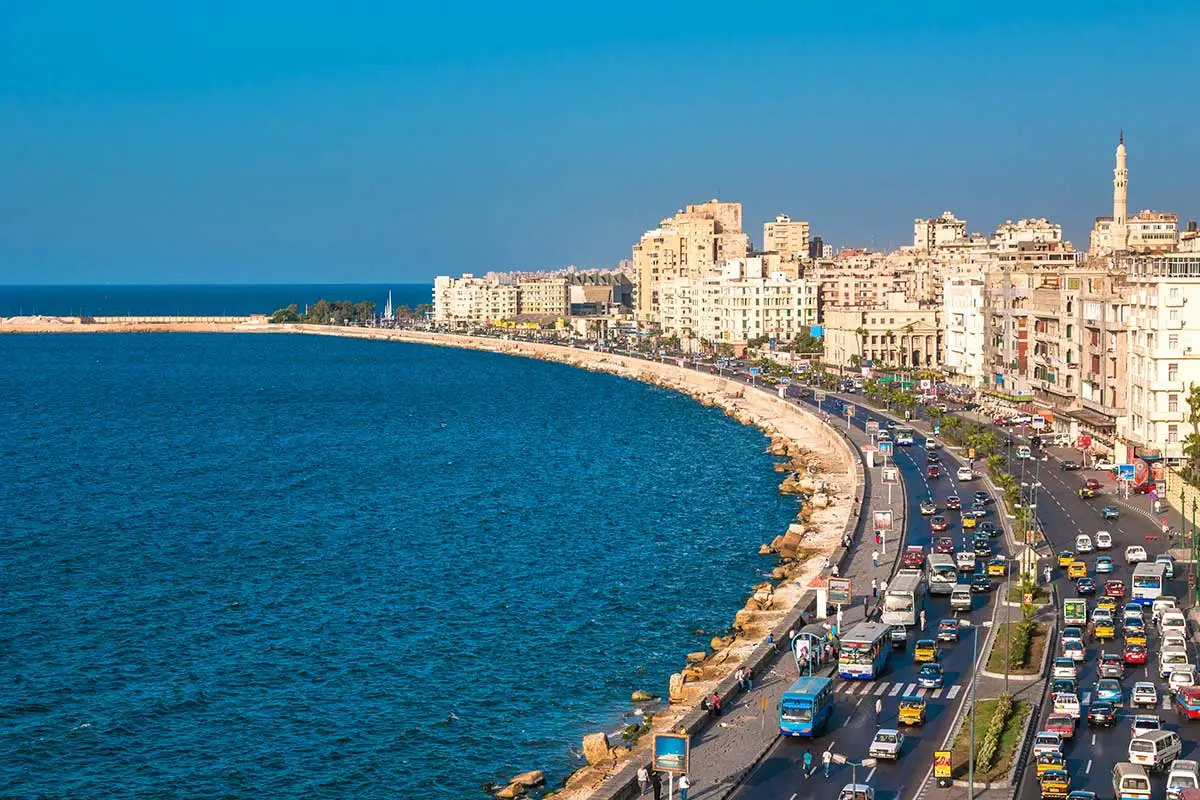
Unfortunately, Alexandria is almost absent from the promotions of travel agencies. And a great injustice is done here. It is indeed a bit cumbersome to get to Alexandria from Hurghada or Sharm, where most charter flights go, but not impossible.
The distances between Egyptian cities are large and quite difficult to travel, but the journey itself is an experience. Wow, what an experience!
I so dearly wish to have the opportunity someday to make a change in this matter! And I hope for the day when Alexandria will be included on the list of Pharaonic tours, or at least on the list of optional excursions.
And if I manage to convince even just a few people, whom I could count on the fingers of one hand, it will still be a great achievement for me. For me, it's clear. Egypt is my soul's destination, and I know that one day I will find my place there.

For many years I had Alexandria on my list, but for various reasons, I only managed to get there in March 2023. I did it in my own style, on my own, starting from Hurghada. I traveled to Cairo by bus, and from there I took the first available train. There are many services, but they are crowded.
In about 4 hours, I experienced the chaotic atmosphere of the Corniche, right from the balcony of my room with a view of the Mediterranean.
I arrived at dusk, when the whole city was coming to life. It can't be this crowded, I thought! Oh, but yes! And how! I didn't come to Alexandria to sleep, which I hardly managed anyway because of the traffic, but those were some memorable days.
And after visiting as much as time allowed over three days, Alexandria has been placed on a pedestal, alongside Aswan and Hurghada (downtown), in the top of my Egyptian favorites.
Some Facts About Alexandria
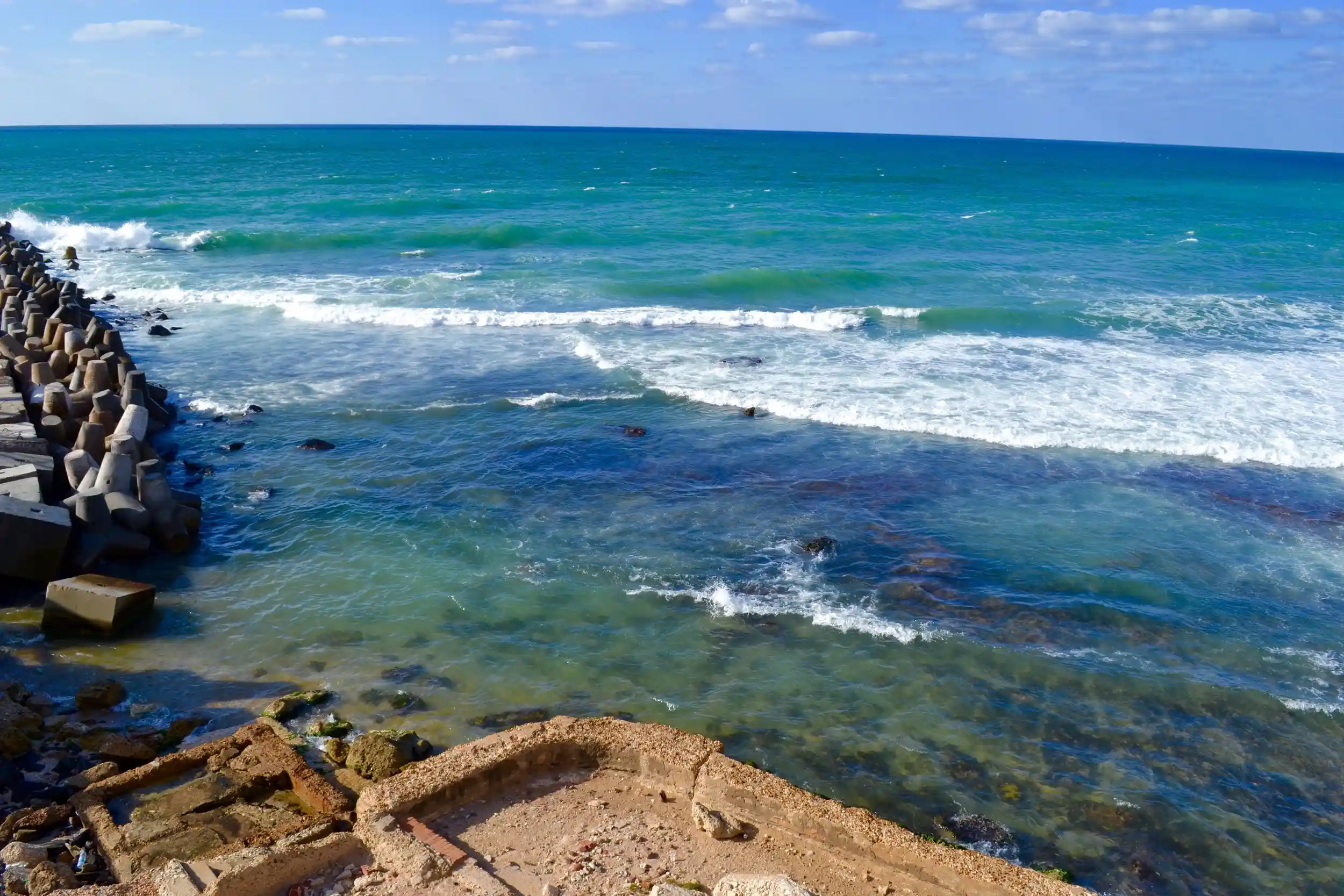
I will not focus on historical details that I do not master and, of course, I leave that to those who are qualified to do so. But to understand the importance of this city and why it should be included on the list of truly important tourist destinations, I will strive to provide some succinct and accurate useful information about Alexandria.
After Cairo, Alexandria is the second largest city in Egypt with a population of over 5 million inhabitants. Officially speaking, since a census is out of the question, and unofficial sources give figures of over 10 million.
It stretches for about 40 km along the north coast of Egypt and the Mediterranean Sea. It is very important to note, however, that Alexandria, founded around 331 BC by Alexander the Great, was the capital of Egypt for nearly 1000 years until the Arab conquest in 641 AD, when Fustat, the current Cairo, became the new capital.

Alexandria became known worldwide especially for the Lighthouse of Alexandria, one of the Seven Wonders of the Ancient World, where today we find the Qaitbay Citadel.
Also here once stood the largest library of the ancient world and the Necropolis (Catacombs of Kom El Shoqafa) – one of the Seven Wonders of the Middle Ages.
Alexandria is a place full of living history, which you can only feel by going there. And not just on a forced tour, but by spending as many days as possible, wandering its streets and trying to transport yourself back to long-gone times.
Alexandria – Complete Visiting Guide
Alexandria is the bride of the Mediterranean and primarily takes into account its position on the northern coast of Egypt. And I'm not just referring to its physical location in relation to other cities, but also to the climate of this city.
So, do not plan your getaway to Alexandria in the winter months if you also want to enjoy some beach weather. For that, head a bit further south, perhaps to the Red Sea resorts.
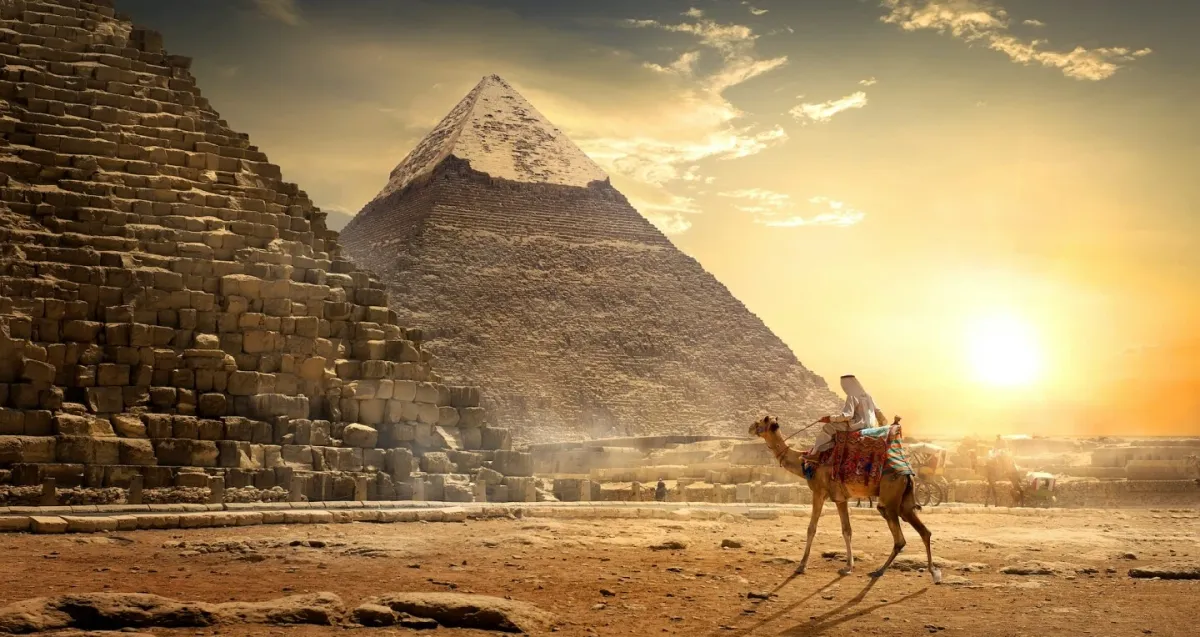
I went in mid-March, two days were sunny, with early summer weather around 22°C (72°F), and on the third day, it rained and the temperature was below 15°C (59°F). But it was good for sightseeing.
To get to Alexandria, you can fly there directly, or by land, with trains, buses, cars, etc. As I mentioned earlier, I arrived by train from Cairo. I bought the ticket directly from the station counter, traveled on an air-conditioned first-class train, and arrived in Alexandria in 4 hours.
The price for a ticket was 100 EGP (approximately €5). The same for the return. Of course, there are also coach services, but I chose the train for comfort reasons and because I had used it before and liked it.
Accommodation, Food, and Transport
Regarding accommodation, the options are unlimited and depending on everyone's wishes, the options are available to you. I chose a modest hotel, right on the seafront, for which I paid just over €20 per night, breakfast included.
The rooftop restaurant gets a big plus from me, from where you can admire the coast on both sides. The same goes for the sea view. Not so much for the traffic noise though! 🙂

As for food, you'll figure it out on the spot. As a suggestion, choose restaurants frequented by locals, places less famous in tourist guides. The further away from crowded spots, the better. Where the locals eat, where it's busy and there's a constant flow, you can be sure you'll eat well. This is absolutely true anywhere in the world.
The same goes for transportation from one place to another. Taxi or Uber were my basic options. And of course, walking. A lot! Next time, when I allocate more days, I will definitely choose public transport.
What is a Must Visit in Alexandria?
Well, here it is!
Alexandria is not a city that shows you all it has at the first step you set on its turquoise and wavy coast. It is like a beautiful woman, hidden beneath waves of fine silk, embroidered in masterful architecture, calling you like a mirage into an oasis of calm, away from the noise of cars and hurried people.
Beyond all this lies its heart. A heart that dwells in narrow streets paved with stone, full of color, greenery, and history. A heart that runs through the alleys of ancient Greek and Ottoman neighborhoods, under romantic balconies.

Alexandria means culture, theaters, libraries, parks, and Bahary-Anfoushy. It means palaces and citadels, Roman ruins, and cellars. To know all this, however, you must come.
Alexandria is a whole collection of encyclopedias and of course, in just three days, I only managed to capture a very small part of the atmosphere of this vibrant city.
Next, I will tell you about the places I visited:
The Library of Alexandria or the Alexandrian Library
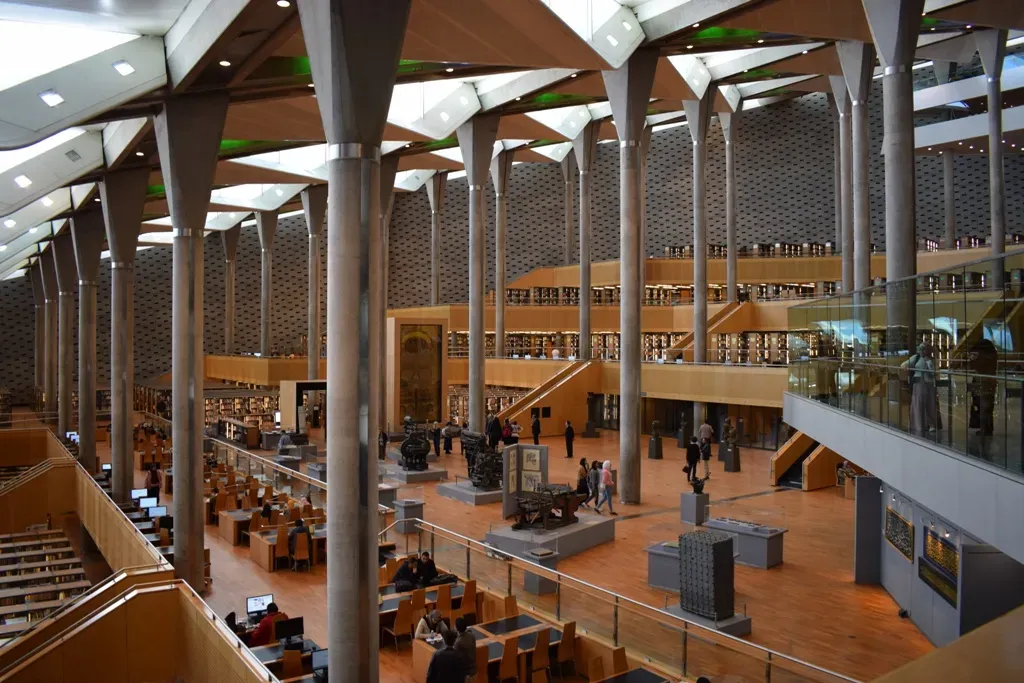
Currently, in Alexandria, we find a new version of the library, one of the largest in the world. Featuring futuristic architecture in a new building shaped like a giant circle tilted towards the sea, on whose exterior wall clad in Aswan granite, we find engraved symbols and letters from the alphabets of the world.
The entire complex impresses not only with its shape, but also through the generous dimensions of the interior and its complexity.
Alongside the millions of books it hosts, divided across several sections (the Central Library, the Taha Hussein Library for the Blind, the Children's Library, the Young People's Library, the Art and Multimedia Library, and the Nobel Library), the Library of Alexandria also includes a Planetarium, three museums (the Museum of Antiquities, the Manuscript Museum, and the Museum of Science History), as well as various permanent or temporary exhibitions.
If you have time, don't just go as a simple tourist, in a rush, to take a quick look, snap a couple of photos, and that's it. Delve deeper, study, learn! Pfff, really, I would move there entirely.
Qaitbay Citadel

The Citadel, Fort, or Qaitbay Citadel (all variants are accepted) was built primarily to defend against Ottoman invasions, in the year 1477 by Sultan Ashraf Sayf al-Din Qaitbay.
Interestingly, the fortress was constructed exactly on the site occupied by one of the Seven Wonders of the Ancient World, namely, the Lighthouse of Alexandria. Some sources say that the fortress was built using stones remaining from the lighthouse, following the earthquakes in 1303 and 1323, which completely destroyed it.
The fortress itself has not had a very good fate either, having gone through various revolts. But there it stands, still upright and looking very well-maintained, thanks to the latest restoration in 2018. The fortress is among the most visited places in Alexandria, a must-see of the city, and rightly deserves its fame.
Montazah Gardens
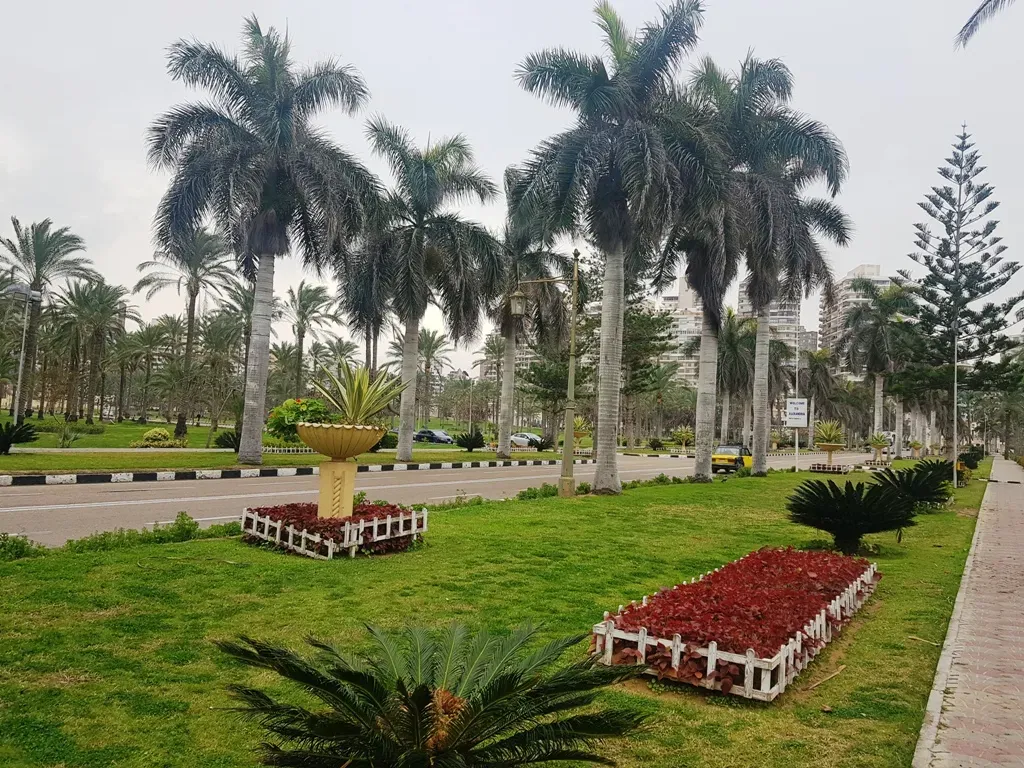
The largest oasis of calm and vegetation in Alexandria, the Royal Gardens of Montazah represent another place that you must definitely add to your list for Alex.
As I walked for kilometers along pathways adorned with blooming flowers and tall palm trees, I tried for a few hours to put myself in the shoes of the royal Fouad family.
The gardens are the most beautiful refuge that can exist in Alexandria, where, as soon as you step beyond the high walls that separate them from the hustle and bustle of Alexandria, you feel like you are in another world.
And rightly so, it really is another world. A tranquil world, an oasis of greenery, a perfect place for a picnic. I saw numerous families everywhere, with their dogs and pigs, setting up their fiesta spot.
I assume everyone picks up their trash, because everywhere, the pathways and gardens, were immaculate.
The Montazah Palace, which served as the summer residence of the former royal Fouad family of Egypt, is not open to the public; you can only admire it a little from the outside. It is undergoing a restoration process, just like many other places in Alexandria and throughout Egypt.
Stanley Bridge
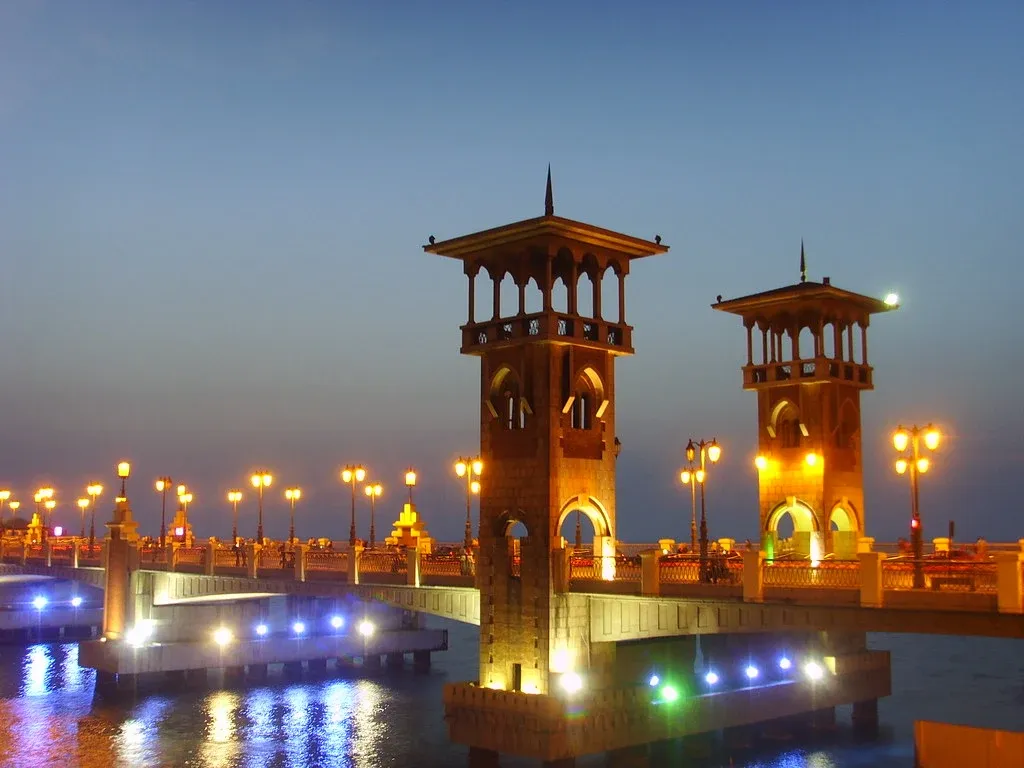
It's a bit much, in my opinion, to consider it a tourist attraction, but the bridge has become an iconic spot for Alexandria's Corniche. It is almost impossible to have searched for Alexandria without coming across at least one image of the bridge.
Interestingly, Stanley Bridge is 400 meters long and is said to have been the first bridge built over the sea.
It's a place where you can capture some stunning images, the view of the Mediterranean is also very beautiful, provided the weather is nice. In the evening, I have seen absolutely wonderful photos of the bridge.
The Corniche of Alexandria
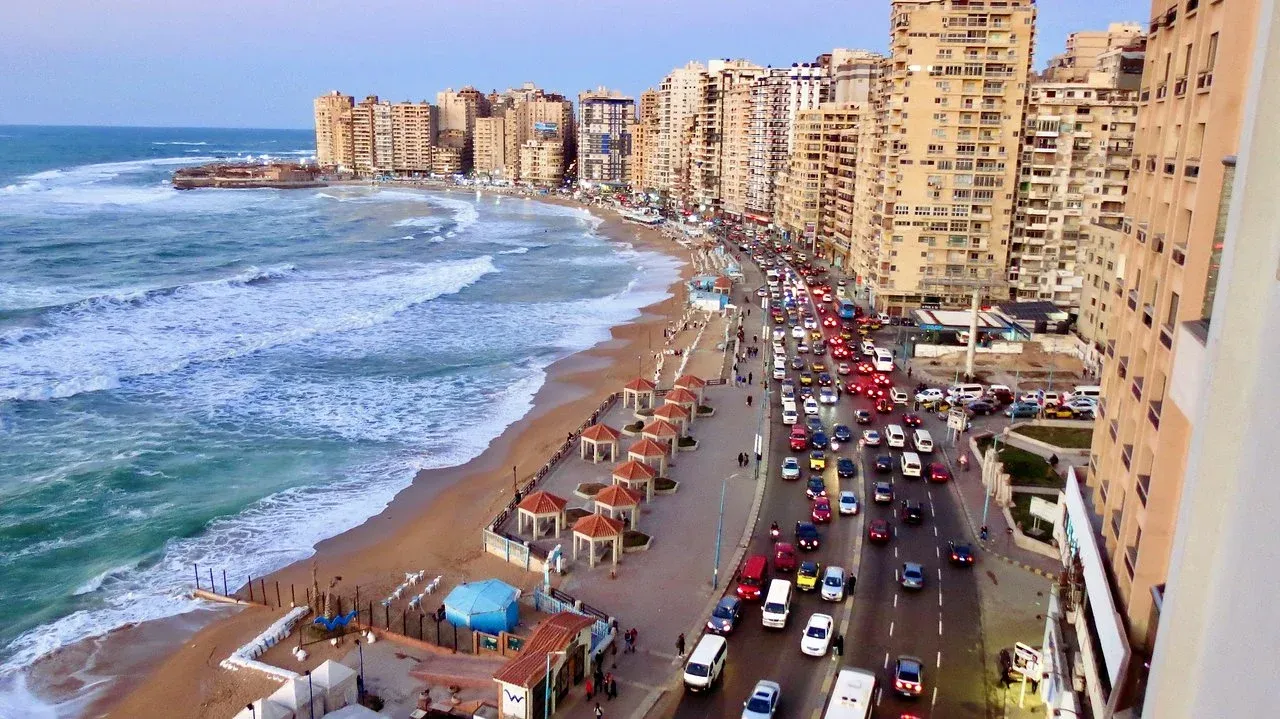
Of course, the city's symbol is the main attraction not only among tourists but especially among Alexandrians. Having a room with a direct view of it, I often sat on the balcony admiring groups and small groups of both young and not-so-young people strolling along the corniche.
It stretches over 16 km and connects two major landmarks of Alexandria: Qaitbay Citadel to Montazah Gardens. Day and night, activity on the Corniche never ceases.
Street vendors selling corn, ice cream, natural juices, and just about anything you can imagine, tourists mixing among the locals, carriage drivers with their horse-drawn carriages, fishermen trying their luck, non-stop cars with horns seemingly set on “on” continuously, all bring life to the promenade and keep you plugged in.
This is not a place for rest; Alexandria buzzes on autopilot. Even around 4-5-6 in the morning, the Corniche is animated by those passing by to pick up trash left overnight, to wash and clean the sidewalk. In the morning hours, when people start to swarm, the place is abuzz. Not for long, of course!
How do I know this? I told you, in Alexandria (as in Cairo), it was hard for me to sleep.
I have compared Alexandria's Corniche with Havana's Malecon in Cuba.
St. Mark's Coptic Orthodox Cathedral

To visit the cathedral, you need a passport! The place is guarded by the army and you won't be able to enter without going through them. It was service time when I arrived in the morning, with many young people and children everywhere, inside and in the courtyard.
St. Mark's Cathedral stands exactly on the site of the Church founded by St. Mark himself, in 42 AD, who is said to have arrived in Alexandria, where he stayed for about seven years.
During this time, he performed many miracles and converted many to Christianity. St. Mark is considered the founder of the Christian church in Alexandria and the first bishop of Alexandria.
Tradition says that during a festival of Serapis in 68 AD, he was arrested, martyred, dragged through the streets, and buried right under the church he himself had built.
His relics were stolen by Venetian merchants and are now kept in St. Mark's Basilica in Venice. His head is said to be kept in the Coptic Orthodox Cathedral that bears his name, in Alexandria.
Alexandria is therefore a collection of collections of encyclopedias, a marvelous city, waiting to be discovered, step by step. I can hardly wait to return, to catch up as much as possible, to learn as much as possible and then, of course, to tell you all about it. I very much hope to someday challenge you to a tour through the beautiful Mediterranean.
Thank you for reading and make sure to subscribe. We're constantly exploring new destinations and share our stories, tips, and the beauty we discover along the way.



